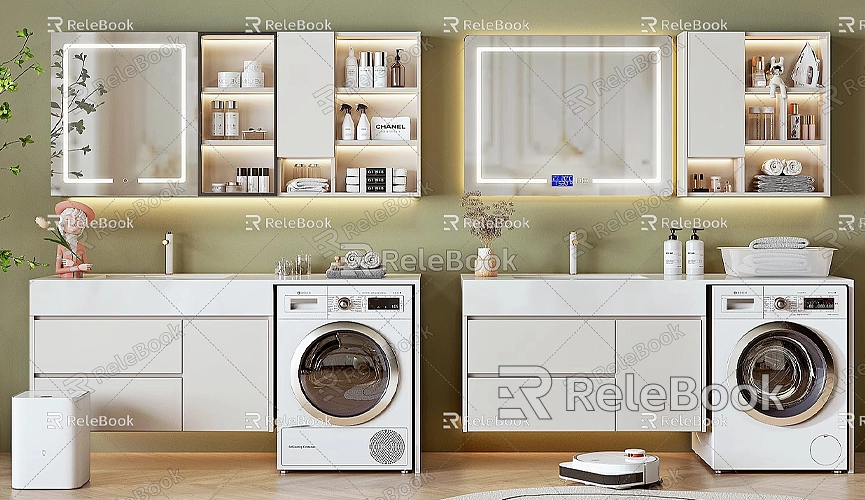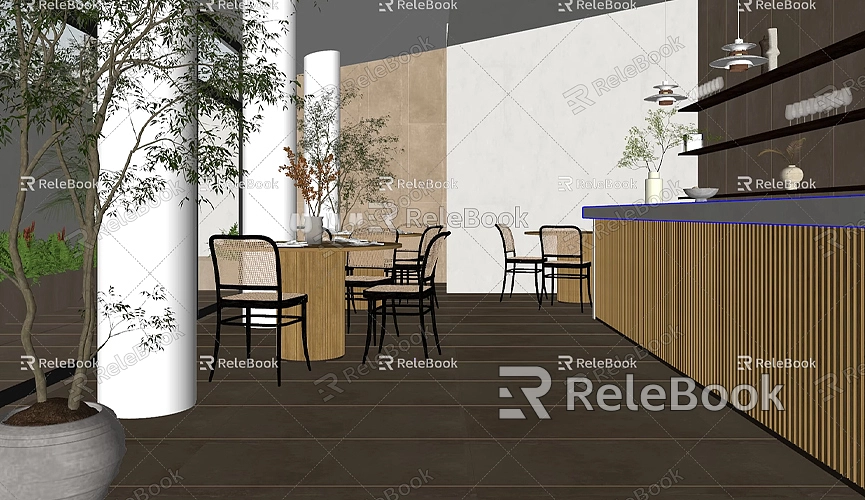How to Make Models in Blender Like SketchUp
In architecture, interior design, and game development, 3D modeling has become an indispensable tool. Within the vast world of 3D modeling software, Blender and SketchUp are two of the most popular options. While both programs help users with architectural, product, and landscape design, they differ significantly in their interface and functionality. SketchUp is loved by designers for its simple, intuitive interface and ease of use, particularly in the field of architecture. On the other hand, Blender, known for its powerful 3D animation and rendering capabilities, also performs excellently when it comes to modeling. If you’re already familiar with SketchUp, you might be curious about how to create similar architectural models in Blender. In this article, we’ll discuss how to model in Blender like you would in SketchUp, comparing the modeling workflows of both programs so you can better understand Blender’s modeling methods.
Understanding the Modeling Differences Between Blender and SketchUp
Before diving into the modeling process, it's essential to understand the key differences between Blender and SketchUp when it comes to modeling. SketchUp is renowned for its push-pull modeling technique, allowing users to quickly build models with simple actions like stretching or extruding. It is especially suited for architectural, furniture, and interior design due to its speed, user-friendly interface, and low learning curve. However, when it comes to handling more complex models or highly detailed designs, especially when dealing with fine textures and rendering, SketchUp can fall short compared to Blender.

Blender, being a comprehensive 3D creation software, offers more advanced tools and greater flexibility, making it possible to control every aspect of a model with precision. While Blender’s interface might seem complex at first, it supports a wide range of modeling applications, from architecture to product design, character modeling, and animation. Blender’s powerful rendering engine and material system also make it widely used in architectural visualization and game development.
Architectural Modeling in Blender
While Blender’s interface and modeling workflow might feel complicated at first, it offers many features similar to SketchUp that can help you create architectural models. The key to using Blender for architectural design is to effectively leverage its various modeling tools and workflows, many of which resemble those in SketchUp. Here are some common methods and techniques to get you started:
Start Modeling with Basic Geometry
Blender’s modeling process often begins with basic geometric shapes, just like in SketchUp. You can start with shapes like cubes, spheres, and cylinders. To add a new shape in Blender, use the shortcut Shift + A to select the geometry you need. These basic shapes serve as the foundation for your model, and by switching to Edit Mode, you can manipulate them into more complex structures.
For example, to create walls, windows, or other architectural elements, you can begin with a cube. You can then use Blender’s Extrude function to extend it into the desired shape, similar to SketchUp’s Push/Pull tool.
Cutting and Refining
In Blender, geometry editing is done in Edit Mode, where you can precisely manipulate vertices, edges, and faces. You can use commands like Extrude, Scale, and Rotate to adjust the shape. For instance, to create windows or doors, you can cut into the model or use Boolean operations to carve out space.
The Boolean tool is particularly useful in Blender. It allows you to combine, intersect, or subtract objects from each other. For example, you can use the Boolean Subtraction operation to cut out a window or door in a wall, making it an intuitive and straightforward way to edit your model.

Using Modifiers for Efficient Modeling
Blender offers several modifiers that can help speed up and simplify the modeling process. Common modifiers include the Mirror Modifier and the Array Modifier. The Mirror Modifier is ideal for symmetrical modeling, allowing you to edit only one part of a model while Blender automatically generates the mirrored version. The Array Modifier helps create multiple identical objects, such as windows, columns, or other repetitive architectural elements.
These modifiers significantly improve modeling efficiency, making the process faster and easier. While SketchUp also has similar functions, Blender's modifiers provide more precise control and a greater range of modeling possibilities.
Adjusting Materials and Textures
Blender’s material system is far more advanced than SketchUp’s, offering intricate control over textures and surface properties. In architectural visualization, materials and textures play a crucial role. In Blender, you can use the Node Editor to create complex materials, adjusting surface qualities like texture, reflection, glossiness, and transparency by connecting different nodes.
While SketchUp also supports texture mapping, Blender allows for much more detailed and precise material control. You can apply various textures, such as wall tiles, glass, or wood, and Blender’s rendering engines (such as Cycles and Eevee) can accurately render the details of these surfaces, particularly when it comes to lighting and shadow effects. This makes Blender a powerful tool for architectural visualization.
Rendering and Visualization
Once your architectural model is complete, rendering is the key to evaluating and showcasing your design. Blender’s rendering engines are incredibly powerful, with Cycles being a physically-based ray-tracing engine that produces highly realistic results. Compared to SketchUp, Blender offers superior rendering quality with rich lighting and shadow effects, making it ideal for architectural visualization projects that require high-quality imagery.
Blender’s Eevee renderer is also suitable for quick previews and real-time rendering. While not as accurate as Cycles, Eevee offers fast feedback, making it useful for rapid scene previews and animation production.
Using Plugins and Resource Libraries
Blender is not just a modeling tool—it also has strong community support and a vast selection of plugins. By using specialized plugins for architectural design, you can streamline your workflow. For instance, the Archipack plugin in Blender offers a range of pre-made architectural elements such as walls, doors, windows, and stairs, allowing you to create models more efficiently.
Additionally, Blender’s plugin marketplace has several options for importing SketchUp models into Blender. This means you can bring your SketchUp models into Blender and continue refining and rendering them there. You can also boost your efficiency with texture libraries and model collections, such as those offered by Relebook, which provides high-quality 3D models and textures to help you complete your architectural visualization projects faster. If you need high-quality 3D textures or HDRI for creating models and virtual scenes, you can download them for free at [https://textures.relebook.com/](https://textures.relebook.com/). For beautiful 3D models, visit [https://3dmodels.relebook.com/](https://3dmodels.relebook.com/), where Relebook offers a wide selection of premium resources.
Transitioning from SketchUp to Blender
Shifting from SketchUp’s modeling approach to Blender may require a learning curve and some adaptation, but once you master Blender’s basic tools and techniques, you’ll be able to create high-quality, detailed architectural models. The flexibility and power that Blender offers make it ideal not only for basic architectural modeling, but also for more complex designs, intricate textures, and high-quality renderings. With its powerful modeling tools, modifiers, and material systems, Blender allows you to complete tasks that are similar to what you can do in SketchUp but also go beyond that into more advanced, high-precision modeling and rendering. If you’re willing to invest time in learning and exploring, Blender provides a rich and versatile 3D modeling platform that can meet all your design needs.

